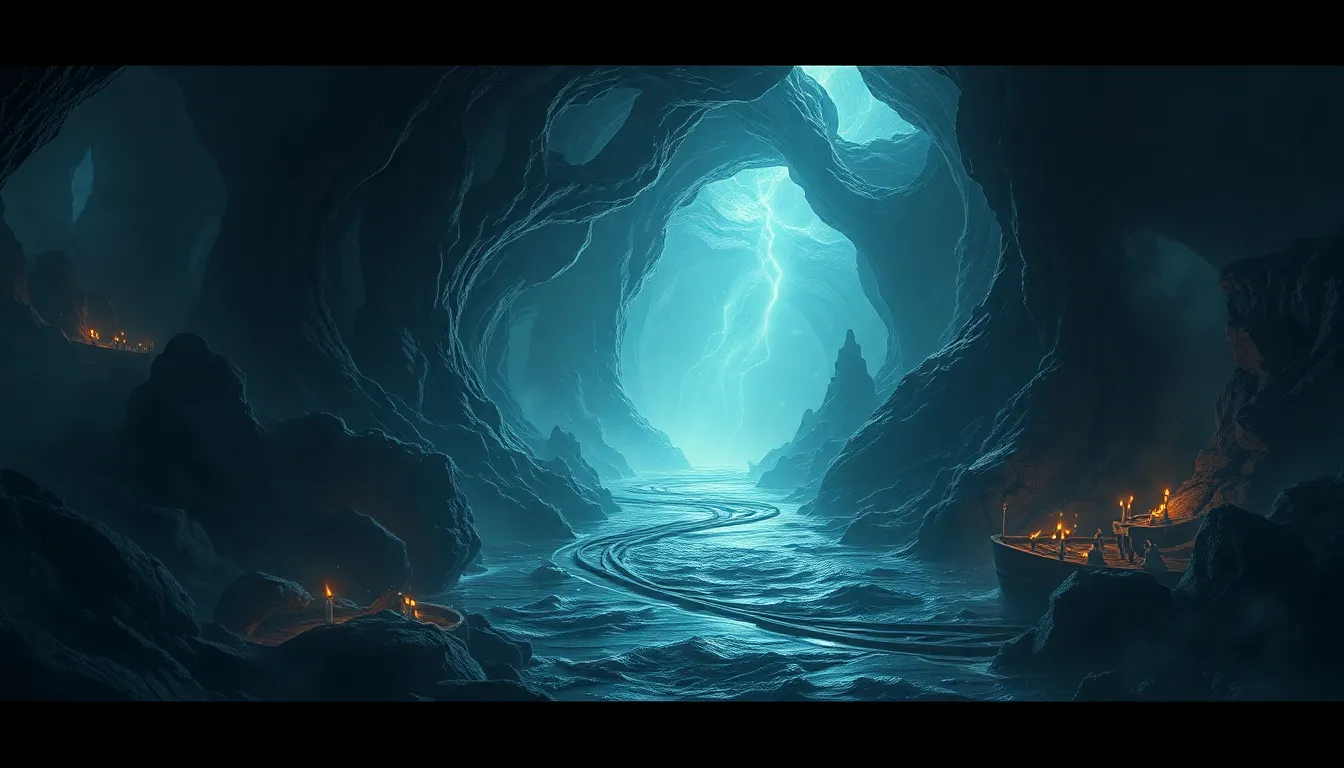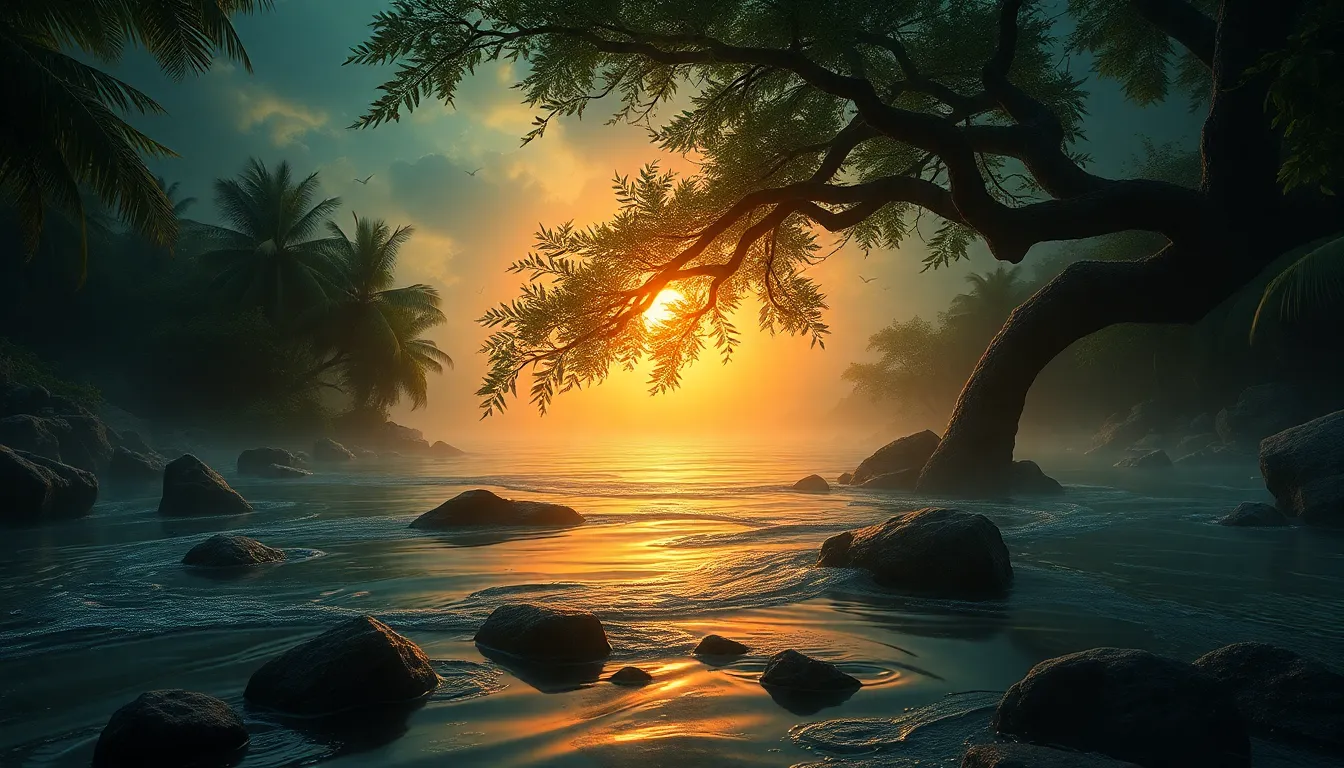The River of the Dreamers: Myths of Inspiration
I. Introduction: The Allure of Inspiration
Inspiration is a powerful force that has driven humanity to create, innovate, and express itself across cultures and time periods. It can be defined as the process of being mentally stimulated to do or feel something, especially to do something creative. In various cultures, inspiration is often associated with divine or otherworldly sources, reflecting the profound significance it holds in the human experience.
Myths have served as a rich tapestry for understanding the complexities of human creativity. They provide narratives that help us navigate the abstract concept of inspiration, offering frameworks through which we can comprehend our own creative processes. This article will explore the metaphor of the “River of Dreamers,” delving into its cultural significance, historical myths, and modern interpretations, as well as practical methods to tap into this river of inspiration.
II. The Concept of the River of Dreams
The metaphor of rivers as symbols of creativity has deep roots in human consciousness. Rivers, with their flowing waters and ever-changing courses, represent the dynamic nature of creative thought. They symbolize the journey of ideas as they evolve, meander, and ultimately flow into the vast ocean of human expression.
Culturally, rivers have been depicted in various mythologies as sacred places where inspiration flows freely. They serve as metaphors for the subconscious, where dreams and ideas are birthed. The “River of Dreamers” emerges as a universal archetype, representing the collective unconscious from which all creative endeavors spring.
III. Ancient Myths: Rivers of Inspiration Across Cultures
Throughout history, different cultures have revered rivers as sources of inspiration. Here are a few notable examples:
- The Nile and the Muses in Egyptian mythology: The Nile River was seen as a divine entity that nurtured the land and its people. The Muses, goddesses of inspiration in the arts and sciences, were often invoked near its banks.
- The River Lethe in Greek mythology: Known as the river of forgetfulness, Lethe offered a paradoxical view of inspiration. It represented the idea that forgetting past experiences could lead to new insights and creativity.
- The Ganges in Hinduism: The Ganges is sacred in Hindu belief, and its waters are seen as purifying. Artists and poets have drawn inspiration from its spiritual significance, associating it with creativity and divine connection.
IV. The Role of Water in Creative Processes
Water has profound psychological effects on the mind, often associated with tranquility and clarity. Many artists and writers report that being near water enhances their creative thinking. The rhythmic sound of flowing water can foster a meditative state, allowing thoughts to flow more freely.
Water serves as a source of life and inspiration in various artistic endeavors. From painting to poetry, the imagery of water captivates the imagination. Here are some case studies:
- Vincent van Gogh: His paintings often feature water, reflecting his fascination with its beauty and movement.
- Ernest Hemingway: The author found solace and inspiration while fishing and writing near the water, particularly in Key West.
V. The Journey of the Dreamer: Navigating Challenges
The journey of a dreamer is often fraught with challenges. The symbolism of navigating through a river highlights the obstacles that creators face in their quest for inspiration. These challenges can take many forms, including self-doubt, societal pressures, and the fear of failure.
Numerous myths illustrate the theme of perseverance. For instance, the tale of Odysseus in Homer’s “The Odyssey” exemplifies the trials faced by a dreamer as he navigates his way home, encountering various obstacles that test his resolve and creativity.
VI. Modern Interpretations of the River of the Dreamers
In contemporary society, the relationship between artists and their sources of inspiration has evolved. Modern artists often find their muse in diverse and unexpected places, influenced by technology and the fast-paced nature of life today.
Technology has transformed creative processes, providing new tools for expression. Despite this, the metaphor of the river continues to resonate in modern literature and art, serving as a reminder of the timeless nature of inspiration.
VII. The Intersection of Science and Myth: Understanding Creativity
Recent advancements in neuroscience have shed light on the processes behind inspiration. Studies show that the brain responds dynamically to stimuli, engaging different areas during creative tasks. Myths often reflect psychological truths about human creativity, illustrating the intricate relationship between the conscious and subconscious mind.
Furthermore, dreams play a crucial role in the creative process. Many artists and inventors have credited their dreams with providing the spark for their greatest works, reinforcing the idea that the River of Dreamers flows into our subconscious.
VIII. Practices to Tap into the River of Inspiration
To access the River of Inspiration, there are various practices that individuals can adopt:
- Rituals and exercises: Engaging in daily creative rituals, such as journaling or sketching, can help individuals connect with their inner muse.
- Creating a ‘river’ space: Setting up an inspiring environment, filled with elements that evoke creativity, can facilitate the flow of ideas.
- Mindfulness: Practicing mindfulness techniques can help unlock creativity by allowing individuals to remain present and open to inspiration.
IX. Stories from the River: Personal Narratives of Inspiration
Personal narratives offer a rich insight into the sources of inspiration for artists. Interviews with contemporary creators reveal diverse experiences, from finding solace in nature to drawing from personal struggles. Historical figures, such as Frida Kahlo and Leonardo da Vinci, exemplify the dreamer’s journey and their unique relationships with creativity.
These collective stories contribute to the shared memory of human creativity, illustrating how myths and personal experiences intersect to shape our understanding of inspiration.
X. Conclusion: Embracing the River of the Dreamers
Inspiration is a multifaceted phenomenon, beautifully captured through the metaphor of the River of Dreamers. By exploring ancient myths, modern interpretations, and personal narratives, we can deepen our understanding of this essential aspect of the human experience. Embracing the river allows us to navigate the challenges of creativity, fostering a connection to the wellspring of inspiration that flows through us all.



